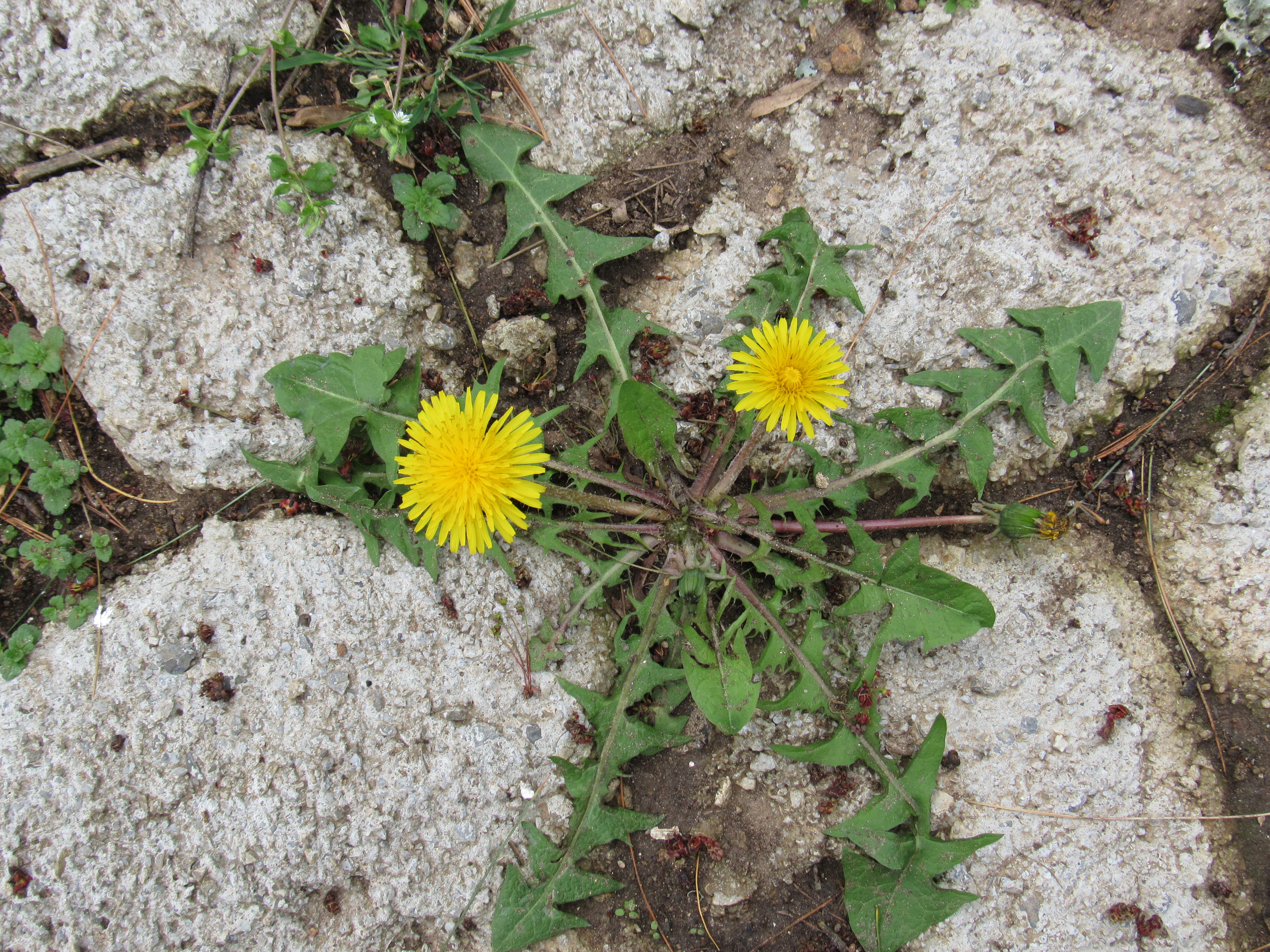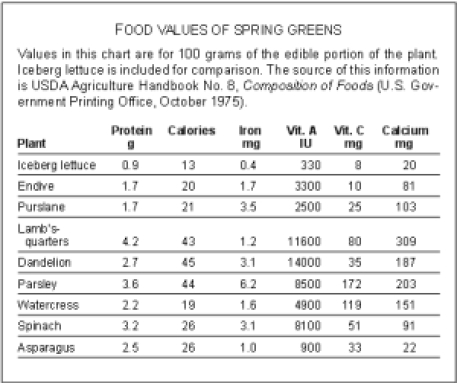And A Recipe for Salad Dressing
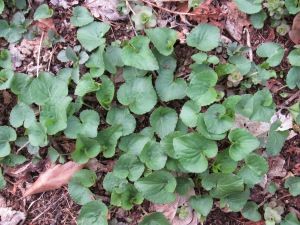
I’ve already rhapsodized about dandelion and ramps, and so I am attempting to limit my springtime-reveling posts to a few other forage-able spring greens available to many of us living in North America. The following spring greens are everyday heros, common, widespread, and abundant, offering proof to our winter-scarred hearts that the cold dark months have retreated, and they feed your cells in spades. In Pharmako/poeia, a poem/manifesto on the powers of plants, Dale Pendell notes that “almost ay edible wild green is richer in vitamins than domestic lettuce.” Vitamin D, which I hope you’ve been supplementing with from October to May, is abundant in wild game and fish and also in wild greens. So my hope for the humans emerging from snow banks is to make like the deer and start nibbling now.
Violets (Viola odorata)
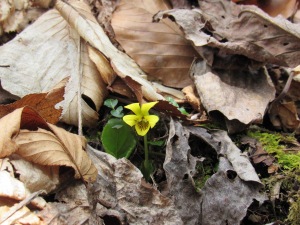
Violets in ancient Rome were associated with Venus and thought of as an aphrodesiac, helped along by the heart-shaped leaf and the romantic purple of the flower of the most well-known species. In Greco-Roman legend, Persephone was enacting her role as springtime deity, picking violets, when Pluto kidnapped her to the underworld. In North America, there nearly 600 species of violet growing wild, with colors ranging from blue and purple to yellow and white, and it is one of the earliest leaves and blossom above ground in the spring.
Violet in a sweet, bitter, and cooling herb best known for its alterative actions, which act upon the lymphatic, renal, and hepatic systems, encouraging movement of fluids and excretion of waste and toxins. Getting things to move is a lofty goal for springtime, when we emerge from our sweet sluggish states. Susan Weed recommends hemlock needle and violet oil for massage in treatment of fibroids and other stagnant mammary conditions and as regular practice for prevention of breast cancer (check out herbalist Lise Wolff’s story about using violet tincture to shrink a breast lump). A syrup or honey with the flowers is a lovely base for a bronchial formula for conditions, including asthma and unrelenting coughs. The common name “Heartsease” also refers to its use treating heart-related ailments.
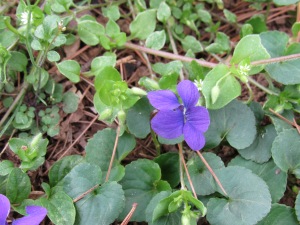
The deep hues of the little violet makes it an aesthetically-satisfying addition to salads. In recipes, I’ll mince this green into savory fritters or meatballs and allow the nutrients to join the melee of the recipe. Candied violets make appearances as confection decor on cakes, and Appalachian herbals offer many a recipe for violet jelly and syrups.
Chickweed (Stellaria media)
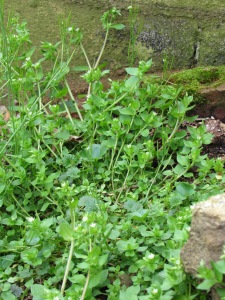
Nearly a succulent, the diminutive chickweed grows like abundant hair in garden aisles and corners of parking lots. The bright green heart-shaped leaves along the long stems appears unmistakable to me these days, although there was a time when I confused it with Scarlet Pimpernel. Please don’t! Not nearly as tasty or nutritious. The genus Stellaria refers to the white star-like flowers, which are easy to distinguish form the orangey blooms on the Scarlet Pimpernel.
Unlike nettles or ramps, chickweed is ill-suited for preservation or cooking but for me is the most immediate experience of spring, offering juicy, sweet, cool and green eats right from the ground. I’ve often harvested a bunch and kept it in the fridge for a few days for use in salads or sandwiches, but its shelf-life is shorter than that of lettuce. I make sure to take scissors to the long stems of this plant when adding it to salads, although it is definitely a silly spring treat to stuff a just-picked handful in your mouth and go about chewing it like a pony.
This cool and bitter herb is best known for its demulcent and emollient properties, offering safe nourishment for taxed bodies and drawing heat and irritation from wounds and infections inside and out. Like many of the spring greens, this herb is an alterative, encouraging the moving of fluids but without being drying or diuretic, and has been known to be useful in breast cysts, ovarian cysts, uterine fibroids or lymphadema. A soothing green salve recipe used for wounds, rashes, dryness often includes chickweed, plantain, and violet leaf.
Nettles (Urtica dioica)
Can enough ever be sung about nettles? Hairy, vicious, darkly green, fibrous and m ineral-laden, nettles reign over my springtime heart. I’m not the only one with these feelings, as evidenced by the many stinging nettles tattoos I see people paint onto their bodies.
ineral-laden, nettles reign over my springtime heart. I’m not the only one with these feelings, as evidenced by the many stinging nettles tattoos I see people paint onto their bodies.
I love the prickly body of this plant, the tiny shots of formic acid offering the stimulating medicine of pain, the upright spine and the unfancy flowers so effective at producing the tiny powerful seed. There was a time when my friends and I were just crossing the threshold into the realm of plant magics, and stinging nettles seemed to embody the dark and nourishing practices of all the witches before us; you can try to walk through a patch with your sandals on, or harvest the tops bare-handed, but she will teach you again and again, until you like the teaching.
Clearly I feel drawn to the energetic and metaphorical aspects of this plant, but perhaps it’s also wise to address the bodily here-and-now of the stinging nettles.
The nettle most commonly used medicinally is of European origins, and the American wood nettle (Laportea canadensis) is of a different genus and also edible, but found in less abundant woodland patches, and also not as deeply green and mineral-rich. Minerals really are the most heralded aspect of nettles, which contain great amounts of silicon and potassium, as well as abundant chlorophyll and vitamins A and C. You’ll notice that many of these spring greens have bitter and cooling aspects, which indicate the alterative and liver-stimulating actions so helpful as we transition from cold to bloom. Nettles is incredibly diuretic, which is something to remember when drinking several cups daily, but its effectiveness in moving fluids helps to dispel dampness, inflammation, and stagnation, such in cases of bronchitis and asthma, nephritis and cystitis, mucous accumulation in the colon, and in eczema appearing particularly in the upper body.
These days I har vest this fierce plant with the respect I feel she’s due: gloved and with scissors or some other kind of clipping device, striping the fresh or dried leaves from the stem since they are often woody or fibrous in a way that I don’t find enjoyable for eating. I love keeping a gallon jar of dried leaves around for cooking, to grind into soups or stir-fries or meat pies. When I was an intern in among the hills of southern Ohio at the United Plant Savers Sanctuary, I was generously tutored in the ways of herbs by Paul Strauss of Equinox Botanicals, who used to mow his nettle patch regularly to keep them from spreading too far. He sent the dried ground leaf to a local bread baker, who in turn sent him fresh-baked wheat-and-nettle loaves. While nettle tea isn’t for everyone on account of the diuretic nature of nettles, many folks love the flavor and vibrancy of this infusion.
vest this fierce plant with the respect I feel she’s due: gloved and with scissors or some other kind of clipping device, striping the fresh or dried leaves from the stem since they are often woody or fibrous in a way that I don’t find enjoyable for eating. I love keeping a gallon jar of dried leaves around for cooking, to grind into soups or stir-fries or meat pies. When I was an intern in among the hills of southern Ohio at the United Plant Savers Sanctuary, I was generously tutored in the ways of herbs by Paul Strauss of Equinox Botanicals, who used to mow his nettle patch regularly to keep them from spreading too far. He sent the dried ground leaf to a local bread baker, who in turn sent him fresh-baked wheat-and-nettle loaves. While nettle tea isn’t for everyone on account of the diuretic nature of nettles, many folks love the flavor and vibrancy of this infusion.
Vinegars + Green Juice
Vinegar is the menstruum most efficient at extracting water-soluble nutrients like minerals. Taking a tablespoon of raw herbal vinegar, straight or in water, is a nourishing practice much older than an encapsulated multi-vitamin. My friends Justin and Amy at Circle Mountain Farm make lovely herbal vinegars, which I’ve used to great effect on salads and sauteed greens. In addition to the aforementioned chickweed, violet, and nettles, other abundant mineral-rich plants to add include red clover, horsetail, oat straw and seed, cleavers, and dandelion.
To stimulate the liver, replenish mineral stores, and move out the sluggishness of winter, Deb Soule of Avena Botanical recommends blending a green juice of chickweed, violets, nettle, dandelion leaf, watercress, and lamb’s quarters, asserting that “This drink will add strength and vitality to any northerner after a long, cold winter.”
While I haven’t the time to explore the myriad nourishing wild edibles one can graze upon these balmy days, I want to give a shout out to a few of the other tender spring shoots that offer themselves: hemlock tips, fiddleheads, grape tendrils, poke shoots, daisy leaves, basswood leaves, smilax tips. . . What are your favorites?
RESOURCES
Michael Tierra, CA, ND. Planetary Herbology.
Sally Fallon and Dr. Mary Enig, Phd. Nourishing Traditions.
Guerrero, Martinez, Isasa. “Mineral Nutrient Composition of Edible Wild Plants.” Journal of Food Composition and Analysis, Volume 11, Issue 4, December 1998, 322–328
Rachele Ellena. “Wild Edible Plants — An Overview.” Nordic Food Lab. http://nordicfoodlab.org/blog/2012/9/wild-edible-plants-an-overview. September 11, 2012
Deb Soule. “Chickweed: A Delicious and Nutritious. . . Weed.” Maine Organic Farmers and Gardener Association.www.mofga.org/Publications/MaineOrganicFarmerGardener/Summer2004/Chickweed/tabid/1326/Default.aspx
Lise Wolff. “Viva Violets!” http://www.herbalistlisewolff.com/violets.html
“A Year with Stinging Nettle.” Herbaloo Blog. http://herbaloo.org/2012/01/03/a-year-with-stinging-nettles-urtica-dioica-materia-medica/
